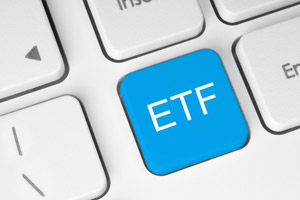 A leveraged ETF (exchanged-traded fund) is like most ETFs in that it trades like a stock and is designed to track the performance of a particular index. However, a leveraged ETF is distinctly different in two ways.
A leveraged ETF (exchanged-traded fund) is like most ETFs in that it trades like a stock and is designed to track the performance of a particular index. However, a leveraged ETF is distinctly different in two ways.
A leveraged ETF uses financial derivatives and debt to increase returns. It also doesn't track the returns of an index on an annual basis, but the daily changes.
Here's a closer look.
How a Leveraged ETF Operates
Magnified Exposure to an Index: Classic ETFs track an index or a basket in a one-for-one manner and are basically passively managed. Leveraged ETFs, meanwhile, attempt to track an index or basket in a two-for-one or three-for-one manner. They require active management.
In short, leveraged ETFs exaggerate the impact of markets' movements. As such, their price will be much more volatile (two or three times) than the underlying index.
In a leveraged ETF with a 2:1 ratio, for example, each dollar of investor capital is matched with an additional dollar. On any given day the underlying index returns 1%, the fund will ideally return 2%. That 2% return will be slightly less for leveraged ETF investors due to management fees and transactions costs.
That kind of return is great when an index is rising. But leveraged ETFs work both ways. When an index falls, a loss in a leveraged ETF will be magnified. A 1% drop in an index translates into a 2% drop in a leveraged ETFs.
Focused on Daily Performance: Most leveraged ETFs are designed to hit their goal every day. That means their performance over long periods of time ends up differing from the underlying index.
The following example from the Securities and Exchange Commission's (SEC) website is a prime illustration:
Let's say that on Day 1, an index starts with a value of 100 and a leveraged ETF that seeks to double the return of the index starts at $100. If the index drops by 10 points on Day 1, it has a 10% loss and a resulting value of 90. Assuming it achieved its stated objective, the leveraged ETF would therefore drop 20% on that day and have an ending value of $80. On Day 2, if the index rises 1%, the index value increases to 99. For the ETF, its value for Day 2 would rise by 2%, which means the ETF would have a value of $96. On both days, the leveraged ETF did exactly what it was supposed to do - it produced daily returns that were two times the daily index returns. But let's look at the results over the 2-day period: the index lost 1% (it fell from 100 to 99) while the 2x leveraged ETF lost 4% (it fell from $100 to $96). That means that over the two-day period, the ETF's negative returns were 4 times as much as the two-day return of the index instead of 2 times the return.
Without question, leveraged ETFs are not for everyone. In fact, they come with sharp warning labels.
Who Uses Leveraged ETFs
Institutional investors, with short-term goals hugely different than the average retail investor, use leveraged ETFs. Day traders looking for big gains in a single session also use them. Simply put, leveraged ETFs provide these investors (or more aptly traders) with more leverage.
Investors with a long-term horizon, and those with low risk tolerance, are not well suited for a leveraged ETF. Issuers of these funds make that very clear in their marketing material.
One leveraged ETF, ProShares UltraShort S&P 500 ETF (NYSE Arca: SDS) has a full page on its website highlighting the fund's risks. Performance may be more pronounced than an underlying index's, the site cautions. It adds that investors should monitor their "holdings consistent with their strategies, as frequently as daily."
The SEC issued a warning about leveraged ETFs in 2012.
In an educational ETF bulletin, the government agency's Office of Investor Education and Advocacy said leverage ETFS were potentially unsuitable for long-term investors. Cited was the fact that leveraged ETFs achieve their investment objectives on a daily basis only.
The bulletin also stated that while some ETFs are relatively easy to understand, others could have unusual investment objectives. Some could use complex investment strategies that might be difficult to understand.
"Do not invest in something that you do not understand," the SEC said. "If you cannot explain the investment opportunity in a few words and in an understandable way, you may need to reconsider the potential investment."
That says it best.
[epom key="ddec3ef33420ef7c9964a4695c349764" redirect="" sourceid="" imported="false"]
More Money-Making Tips:
- Make This Your Wealthiest Year Yet with 3 Steps and 5 Stock Picks
- The Energy Sector's Best Low-Risk, High-Yield Opportunities
- 7 Ways to Tell If Your Gold Is Real
Related Articles:
- ProShares: UltraShort S&P 500
- U.S. Securities and Exchange Commission: Leveraged and Inverse ETFs
- ETF Database: The Ultimate Guide to Leveraged ETFs: Their Uses, Their Risks, and More


